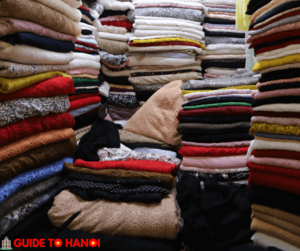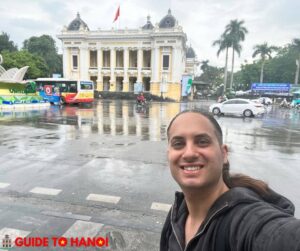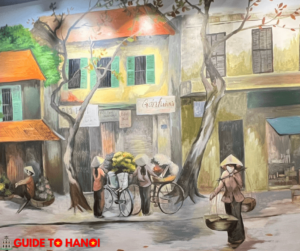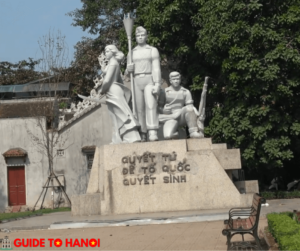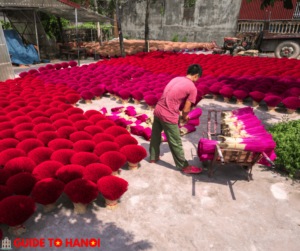Welcome to our comprehensive guide on finding the perfect place to stay in Hanoi, Vietnam’s vibrant and culturally rich capital.
Nestled along the banks of the Red River, Hanoi is a city that seamlessly blends its rich history and traditions with the dynamic energy of a rapidly growing metropolis.
Whether you’re a history enthusiast eager to explore ancient temples, a food lover looking to savor Vietnamese street cuisine, a business traveler seeking convenience, or a leisure traveler searching for tranquility, Hanoi has the perfect neighborhood.
In this guide, we will take you on a journey through the city’s diverse districts, each offering a unique experience to help you decide where to stay and make the most of your visit to this captivating city.
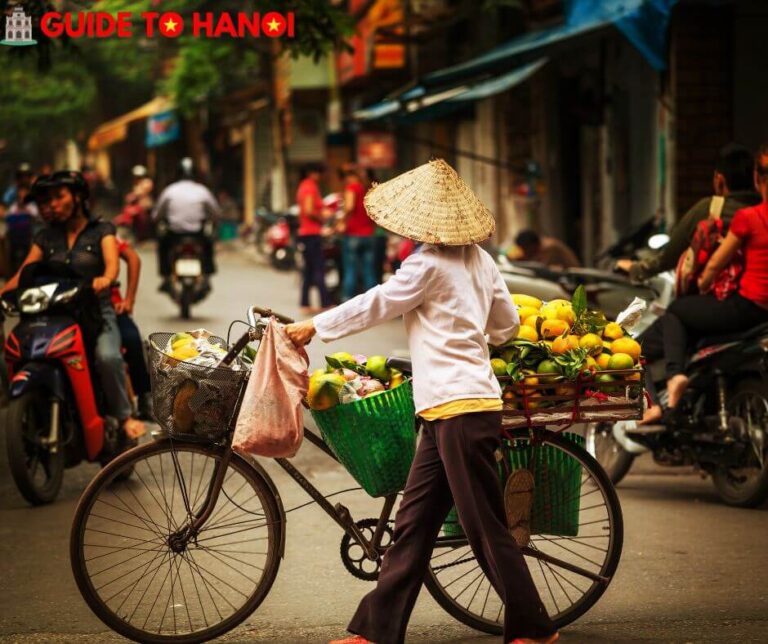
What area is the best to stay in Hanoi?
Choosing where to stay in Hanoi depends on your preferences, budget, and the purpose of your visit.
Hanoi, the capital of Vietnam, offers a wide range of accommodations, from budget hostels to luxury hotels.
Here are some popular areas to consider:
Old Quarter
The Old Quarter is the heart of Hanoi and a popular choice for many travelers.
It’s known for its narrow, bustling streets, historic charm, and a wide range of accommodation options, from budget guesthouses to boutique hotels.
Staying in the Old Quarter is within walking distance of many attractions, street food vendors, and markets.
Hoan Kiem District
This district encompasses the Old Quarter and the Hoan Kiem Lake area.
It’s an excellent location for those who want to be in the center of the action and close to Hoan Kiem Lake, a scenic and historic spot.
Ba Dinh District
Ba Dinh is home to several important landmarks, including the Ho Chi Minh Mausoleum, One Pillar Pagoda, and the Presidential Palace.
It’s a quieter area with a mix of mid-range and luxury hotels.
West Lake (Tay Ho)
West Lake is a more peaceful and upscale area known for its expat community and beautiful lake views.
This neighborhood has various boutique hotels, restaurants, and bars.
French Quarter
The French Quarter offers a more spacious and elegant atmosphere.
It has several colonial-era buildings, government offices, and luxury hotels.
This area provides a more relaxed atmosphere compared to the bustling Old Quarter.
Tay Ho (West Lake)
Tay Ho or West Lake is an excellent choice for a quieter, more residential neighborhood.
This area has many villas, serviced apartments, and boutique hotels.
It’s a bit farther from the city center but offers a more serene atmosphere.
Cau Giay District
This district is becoming increasingly popular among business travelers due to its proximity to Hanoi’s new business and commercial areas.
It has a mix of accommodations, from budget to mid-range hotels.
Remember to consider your budget, preferences, and the purpose of your visit when choosing the right area to stay in Hanoi.
It’s also a good idea to read reviews and research specific accommodations to ensure they meet your needs and expectations.
Is it better to stay in the Old Quarter or the French Quarter in Hanoi?
The choice between staying in the Old Quarter or the French Quarter in Hanoi depends on your preferences, travel objectives, and the atmosphere you’re seeking:
Old Quarter:
- Historic Charm: The Old Quarter is renowned for its historic charm, narrow streets, and vibrant atmosphere. It’s the heart of Hanoi’s cultural and commercial life and is home to many traditional shops, street food vendors, and markets.
- Convenience: Staying in the Old Quarter is within walking distance of many popular attractions like Hoan Kiem Lake, the Water Puppet Theater, and St. Joseph’s Cathedral.
- Budget Options: This area offers a wide range of accommodations, from budget hostels to boutique hotels, making it suitable for travelers with various budgets.
- Street Food: If you’re a food enthusiast, the Old Quarter is a paradise for street food lovers, offering a variety of local dishes.
French Quarter:
- Elegance and Space: The French Quarter is more spacious and showcases elegant French colonial architecture. It provides a more tranquil and relaxed atmosphere compared to the hustle and bustle of the Old Quarter.
- Luxury Accommodation: You’ll find a concentration of luxury hotels, upscale restaurants, and designer boutiques in the French Quarter.
- Government Buildings and Embassies: This area is home to government offices, foreign embassies, and a sense of grandeur that reflects Hanoi’s colonial history.
- Quiet Retreat: If you’re seeking a quieter retreat after a day of exploring the city, the French Quarter can offer a more serene experience.
In summary, the Old Quarter may be your preferred choice for a lively, immersive experience with easy access to street life and attractions.
On the other hand, if you seek elegance, upscale accommodations, and a quieter ambiance, the French Quarter might be more appealing.
Ultimately, the choice comes down to your travel style and what you value most in your accommodation and surroundings.
Where to Avoid in Hanoi?
When visiting Hanoi, it’s advisable to exercise caution in certain areas, primarily due to traffic and congestion.
Some areas where you should be careful include the chaotic streets near the Old Quarter, where traffic can be overwhelming, and the railway tracks near Train Street, where trains pass through very close to houses.
Stay alert and follow local advice for safe navigation.
Which Area is the Centre of Hanoi?
The heart of Hanoi is often considered the Hoan Kiem District, encompassing both the Old Quarter and the Hoan Kiem Lake area.
This district is where you’ll find the city’s historic and cultural center, bustling streets, and many popular attractions.
Should I Stay in Hanoi Old Quarter?
Staying in the Hanoi Old Quarter is an excellent choice if you want a vibrant atmosphere, proximity to historic sites, and a wide range of accommodation options.
It’s particularly suitable for travelers who enjoy bustling street life, street food, and cultural immersion.
However, if you prefer a quieter, more upscale experience, you might explore other districts, such as the French Quarter or West Lake. Your choice should align with your travel preferences and priorities.
In conclusion
Hanoi offers a diverse range of neighborhoods, each with its unique charm and appeal.
Whether you prefer the lively and historic Old Quarter or the elegant French Quarter, there’s an area in Hanoi that will suit your preferences and budget.
Consider your travel objectives, research specific accommodations, and stay alert when navigating busy areas to maximize your stay in this vibrant city. Happy travels!




